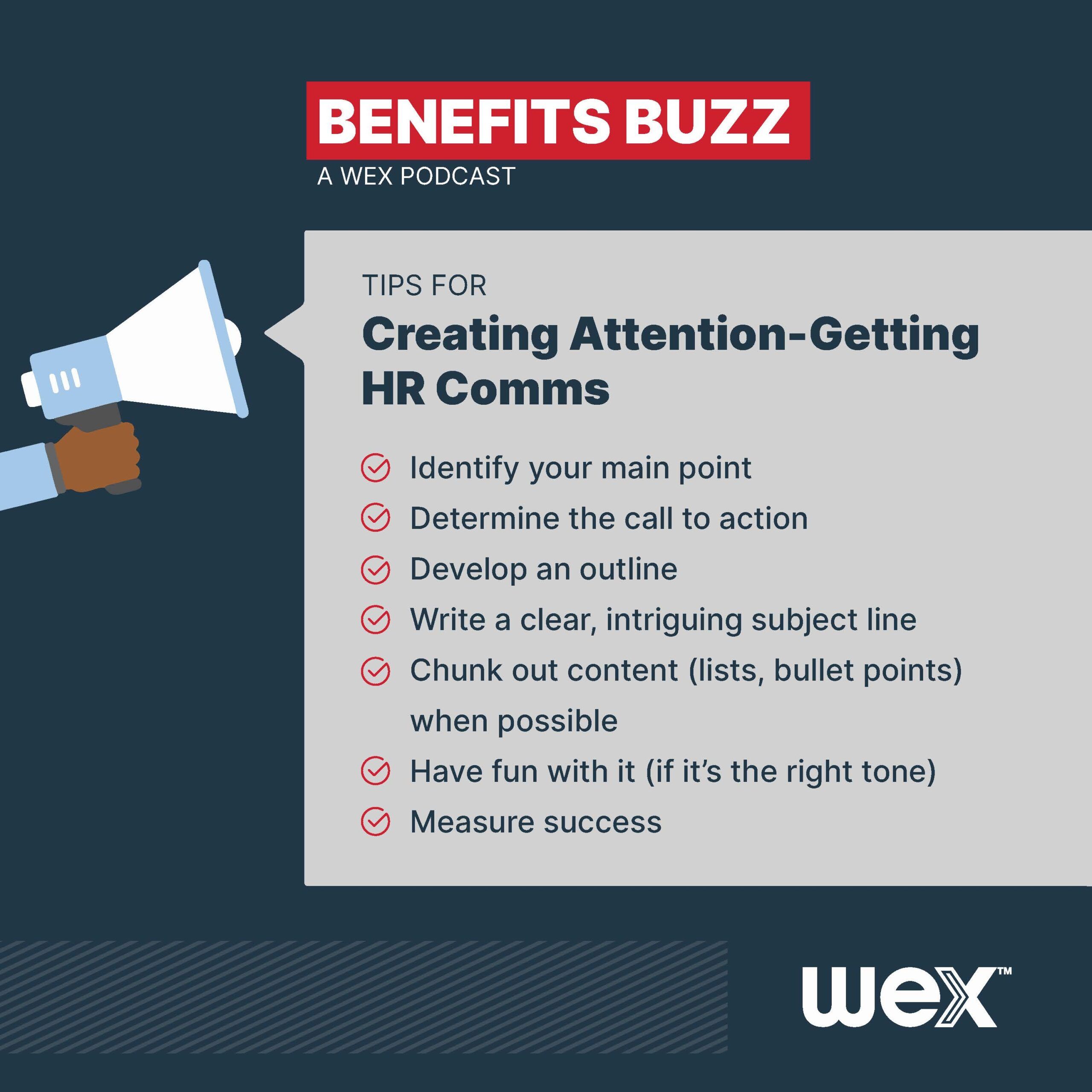Stay connected
Subscribe to our health benefits blog and follow us on social media to receive all our health benefits industry insights.

Email fatigue is real. It’s an issue that’s increased with so many employees working remotely. One recent survey found that 38 percent of office workers cited “email fatigue” as being a likely reason to push them to leave their jobs. So how do you cut through the fog of email fatigue and communicate your message to employees in a clear, concise way?
Watch our full episode of Benefits below for tips on clearly communicating to your employees or keep reading to learn specific HR email tips to improve your communications.
Your employees are inundated with emails every day. You want your emails to make them stop in their tracks and learn more. Keep your subject lines short and keep them clear. If your employees don’t learn anything else from what you’re emailing them, what’s the one takeaway you have for them? Because, if they don’t open the email, they’re not going to learn any of the secondary messages. Mailchimp recommends subject lines be between 9 and 60 characters.
If you are going to catch your employees’ eyes as they move through their inbox, it needs to be for a worthwhile purpose. Have a clear call to action in mind before you start writing the email. What is it that you want the employees to do after reading the email? What do you want them to know?
If there are actions to take, consider providing a numbered list so it’s easier to digest and easier to follow each step. Graphics may help, too.
Personalized emails have much higher open rates than ones sent to a broad message. How can you personalize?
Inject some personality in your emails! Keep the message clear and concise doesn’t mean that you have to write like a robot either. Sprinkle in emojis here or there. Include a GIF when appropriate that will give your employees something to talk about. This tactic may not always be appropriate, but identify opportunities when it is.
Would you like to learn more about writing engaging communications? Check out our cheat sheet below.

The information in this blog post is for educational purposes only. It is not legal or tax advice. For legal or tax advice, you should consult your own counsel.
Subscribe to our health benefits blog and follow us on social media to receive all our health benefits industry insights.